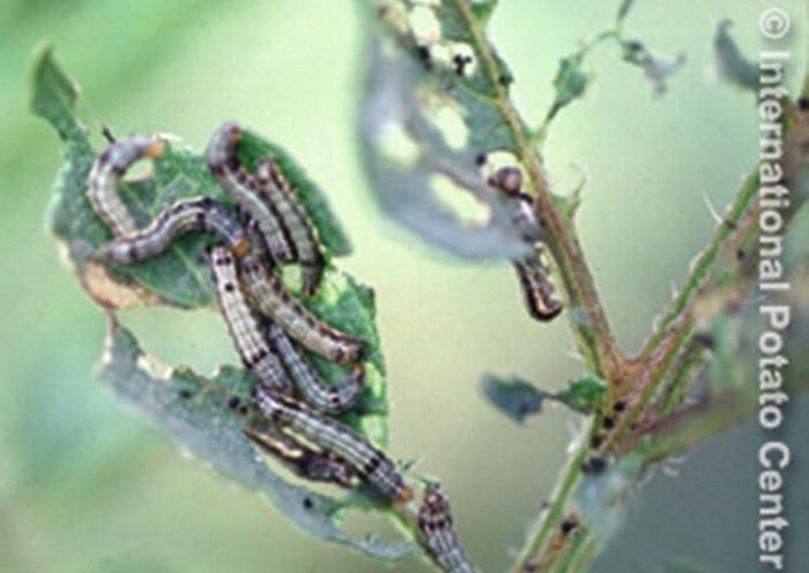Scientific description of the Armyworms (2020)
Based on J. Kroschel. et al. (2020) Insect Pests Affecting Potatoes in Tropical, Subtropical, and Temperate Regions. In: Campos H., Ortiz O. (eds) The Potato Crop. Springer, Cham
The authors of this content are Jürgen Kroschel, Norma Mujica, Joshua Okonya, Andrei Alyokhin
Spodoptera eridania (Stoll), Spodoptera frugiperda (J E Smith), Mamestra configurata (Walker), Spodoptera ornithogalli Guenée, Copitarsia decolora (Guenée), Feltia spp., (Lepidoptera: Noctuidae)
Distribution
Spodoptera frugiperda is distributed in North, Central, and South America, Africa, and India (CABI 2018a) (image below). S. frugiperda is on the EPPO A1 list of quarantine pests and is intercepted occasionally in Europe on imported plant material (CABI 2018b). S. eridania occurs throughout southern USA, Central and South America, and the Caribbean. It is not established in Europe (CABI 2018c). Mamestra configurata is restricted to North America (Canada, USA, Mexico) (CABI 2018d).

Spodoptera frugiperda larvae infesting potato leaves (a). (Courtesy: CIP)
Host range
Army worms feed on a wide range of crops and are important pests especially in cereals. However. they have also been reported to feed on potato in absence of the primary hosts (Strand 2006).
Symptoms of infestation
Armyworms are mainly forage feeders and feed during the day, do not make burrows, and may migrate in mass into potato fields from adjacent crops. They also feed on tubers that are exposed on the surface or accessible through cracks in the soil (CIP 1996; Larrain et al. 2003; Sanchez and Vergara 2002).
Impacts on production losses
Armyworms can cause up to 100% crop defoliation of potato plants. Some defoliation from armyworms can be tolerated. Keeping defoliation between 10 – 15% will generally prevent yield losses.
Methods of prevention and control
It is recommended to make suitable soil preparations that expose the pupa of the insect to environmental conditions and predators. There is biological control based on the use of natural enemies of eggs and larvae, such as Tachinid insects, Inchneumonids, Trichogramatids, the fungus Zoophthora radicans affecting larvae, among others (Larrain et al. 2003).
Spotted or localized field infestations are typical, calling for focused insecticide treatments. Toxic baits prepared as a mix of bran, molasses, water, and insecticide should be applied at the base of plants at dusk (CIP 1996).
